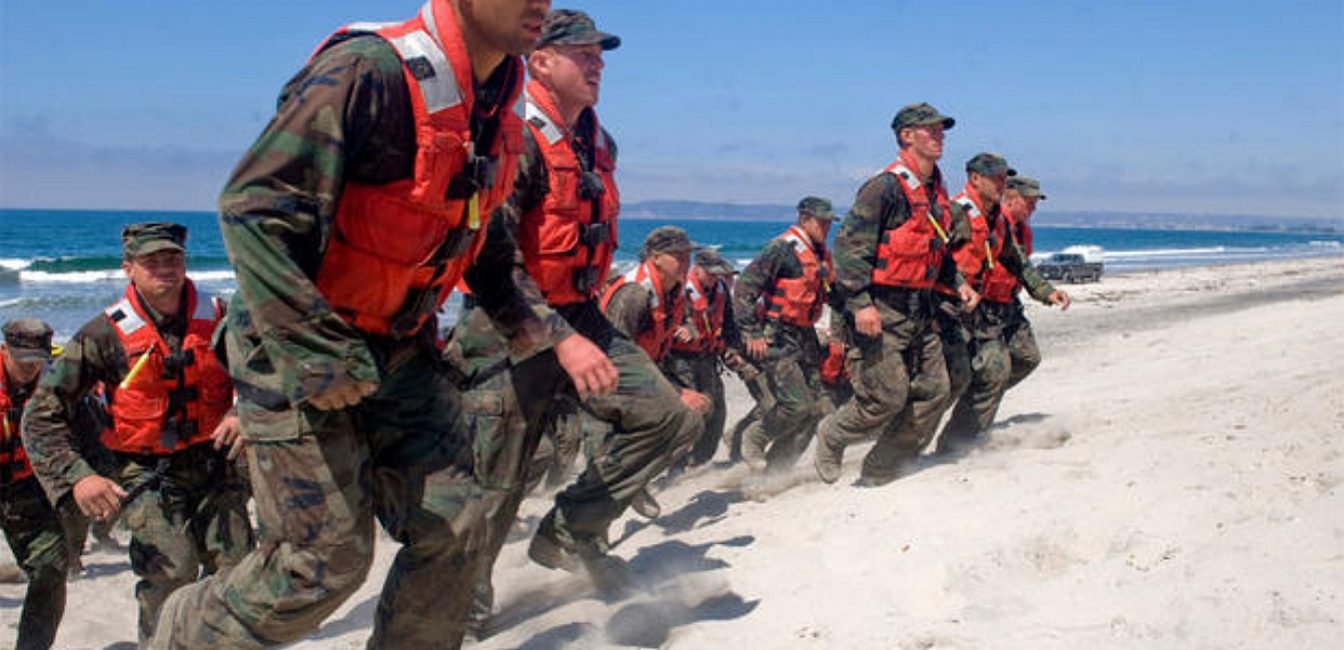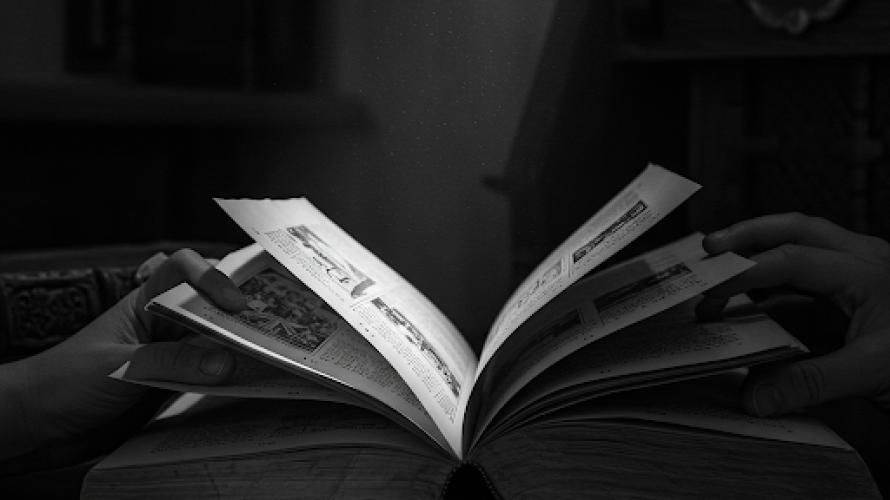Warriors don’t start out that way. They take the necessary time and steps to learn and transform into battle-ready soldiers. They do so by building their talent through hours and hours of rigorous practice. Speaking of Warriors, Jeff Boss wanted to be a Navy SEAL because he wanted to do something different with his life—something exciting that allowed him to literally jump out of planes.
“If becoming a SEAL was possible, despite however many people failed the selection process, if it was possible then I could do it,” he says. Boss spent 13 years in the Navy. He had eight deployments, dealt with four parachute malfunctions, was shot twice, and lost way too many friends.
He talks regularly about team training as a SEAL—how each member strives to make themselves and their teammates better and how no person is more important than the team. His team trained as a unit and did everything in their power to contribute what they knew to help advance the entire team forward.
“The team that was deployed at the time would share their lessons learned,” he says. “That would shape how we trained. That allowed us to stay on the cutting edge. It allowed us to be prepared for when we were overseas so that we could not ignite or activate that courage but employ it.”
Navy SEALs meticulously train for missions over an extended period of time. Their training includes process, practice, and repetition for hours on end. A marathon runner also embarks on this same type of training. Long distance runners don’t simply wake up one morning and conquer a marathon. There’s regimented training. There’s a reason 99 percent of marathon runners finish their races: It’s because they are disciplined.
Training for Courage Requires Discipline
That discipline is a critical component of training for courage. So much so that when you ask somebody who has courageously mastered their training, it starts to feel less and less like courage. CBS anchor Carlo Cecchetto is on the front line covering this country’s most compelling stories. “The policemen and firefighters I talk to that are involved in those crazy situations, they don’t think they’re heroes,” he says. “They don’t think they’re courageous. They’re just doing what they thought they should do.”
The irony? To outsiders, these feats are courageous. To the trained insider, the behavior has become second nature. Instead of having a fear of the unknown, these people have the familiarity of the known. When training transforms into instinct, the idea of courage fades. Skilled teams that have been properly trained don’t believe that they’re courageous. The training has fully taken over, and muscle memory is at work.
This isn’t simply describing people who willingly took on the challenge of courageous training. It also describes those who weren’t expecting to opt in on courage. Patricia Chapin-Bayley is head of enterprise solutions at Toluna, a market research and insights company. When she was a university student, she took a job with one of the largest banks in Toronto. With little to no experience, Chapin-Bayley was given a significant amount of training to handle the stresses that could come with the job of bank teller.
“We all know bank robberies happen, but I didn’t even consider it a real possibility,” she says. “The understanding of this risk and my fear forced me to pay very careful attention to the robbery training module. It repeated robbery scenarios again and again, and we were shown videos of simulated robberies with the correct way to respond—the bank teller was shown acting out the very steps we were being trained on.” Thanks to entrenched muscle memory, Chapin-Bayley knew the robbery training methodology by heart. A year later, she was forced to put this process to work.
“No one was paying attention to this man and our transaction,” she says. “He spoke to me quietly and said, ‘I’m here to rob the bank. This is a robbery; don’t make it a homicide.’ He lifted his jacket to show me the gun he had concealed.” Chapin-Bayley switched into autopilot. She spoke to the man calmly and steadily. She followed all the learned protocols, which kept her colleagues safe and minimized the loss to the bank. It wasn’t until the robber walked out of the bank that Chapin-Bayley broke down. But it was the extensive training that enabled her to handle the situation with minimal thought. “I didn’t feel I was courageous at the time—I was just doing what I was trained to do and what was expected of me,” she says.
Training for Courage Requires Practice
For many in business, the lack of rigorous workplace training is a big problem. We are not good at providing our employees with the proper tools and tips they need to be effective in the office. Either the training time is too short, or the programming is not as potent or repetitive as it needs to be.
Verne Harnish addresses this in his book Scaling Up. “In sports, the team gets to practice 90 percent of the time and perform 10 percent,” he wrote. “In business, it’s the opposite: We’re lucky if we get 10 percent of the time to practice through executive training and development.” I had an old soccer coach who preached, “Practice doesn’t make perfect. Perfect practice makes perfect.” Not only do you need training, but you also need relevant training at game speed that enables you to do your job in real time.
Train according to how you want to perform. What we’re really talking about here is preparation. To train is to prepare. Former basketball coach Bobby Knight says, “The key is not the will to win . . . everybody has that. It is the will to prepare to win that is important.” In business, being prepared helps keep us away from our instinctive freeze, fight, or flight reactions to tough situations. Some experts have suggested it’s 95 percent freeze or flight and only 5 percent fight. We need training to override the way we’re wired. The psychological speed bump we must often cope with is our overly protective central nervous system, and that doesn’t do anything to help.
Training for Courage Requires Training Your Brain
We are all equipped with our sympathetic and parasympathetic nervous systems. The sympathetic up-regulates (or activates our fight or flight responses) while the parasympathetic, from a physiological sense, helps down-regulate our bodies (slows our heart rate and conserves energy). The system works together, in tandem, to help power our bodies when we need that extra push away from danger. It also tempers our heart rate or breathing during mega stressful situations.
Emily Cox-Martin, an assistant professor and practicing clinical psychologist at the University of Colorado Anschutz Medical Campus, says that while the back-and-forth process of our central nervous system was optimal in the caveman days, the way this system affects us in modern times is antiquated. Our central nervous system used to save our lives; now, even when we’re facing minor threats not involving grizzlies, our nervous systems aren’t equipped to detect a difference. Our heart begins to pound, our breathing is affected, and it’s increasingly more difficult for us to function. It works against us in the office and can lead to paralysis, team dysfunction, and even costly sick days that halt productivity.
So how do we cope when our freeze, fight, or flight response kicks in? John Assaraf, a key contributor to the book The Secret, is the founder and CEO of NeuroGym. Assaraf, who describes his company as a mental gym for your brain, believes that “it’s all about helping people recognize the mental and emotional obstacles that are holding them back and teaching them ways to train their brain to release them to get to the next level.” An accomplished serial entrepreneur, even Assaraf deals with the realities of his central nervous system. “Every time I want to achieve more, the insecurities come up. Am I smart enough? Am I good enough? Am I to that level? I think I could do that, but then there’s a little voice that goes ‘What if you don’t?’”
The good news for all of us is that we have the capacity to calm that little voice inside our heads. We can train ourselves and learn how to be courageous. You don’t need Wi-Fi to access courage. Courage doesn’t need to be plugged into a wall nor is there an app you can download to find it.
Training for Courage Requires Willingness to Change
We can overcome the realities of our central nervous system. We can create processes that, over time, help us repeatedly make courageous decisions in our rapidly changing world. We can prepare for and practice courage. When we practice, we make a habit. When we make a habit, we create routine.
To be courageous, there first must be a commitment to willingness. Researcher Brené Brown writes of resilient leaders in her book Rising Strong, “They have the ability and willingness to lean in to discomfort and vulnerability.” You have to want to be better. And, that’s not always a walk in the park. What we’re really talking about here is a willingness to change. What if we could instill in you the necessary training to make courageous decisions in your business? What if you were empowered with the tools you needed to be a bold force for positive, evolving change in your workplace?
At our special-forces re-invention consultancy called Courageous, the “rally cry in our why” purpose is to help our clients liberate with courage. In essence, we are freedom fighters providing a nudge-of-an-elixor that change is not just possible but attainable? Why the need? Because re-invention must happen to maintain relevance. What we’ve noticed is that 95 percent of companies are stuck in preservation mode, while only 5 percent are in liberation mode. This leads to our personal call for action: to help our clients proactively choose courage rather than end up in the abyss of business normalcy.
If you would like a step-by-step process on how to unlock corporate (or personal) courage, creativity and innovation inside your business, nab my book Return On Courage at Amazon. Or, reach out to me directly. I’ve been fortunate to share this framework with Google, Kellogg’s Europe, charity: water, Johnson & Johnson and many others. I’m happy to share more about the steps we take to transforming your business into a relevant, thriving Courage Brand®.
Ryan Berman is an author, keynote speaker and the founder of Courageous; a create-the-change company that builds and leads Courage Brands®. Ryan has helped install courage in the stories and culture at Google, Kellogg’s Europe, charity: water, Major League Baseball, Snapchat, Johnson & Johnson, Cereal Partners Worldwide and US Ski & Snowboard. His book ‘Return on Courage’ shows how during these courage deficient times, courage is a competitive advantage for those leaders who choose to unlock it. Berman also has his own altruistic Courage Brand called Sock Problems: a sock company that “socks” different problems in the world.


